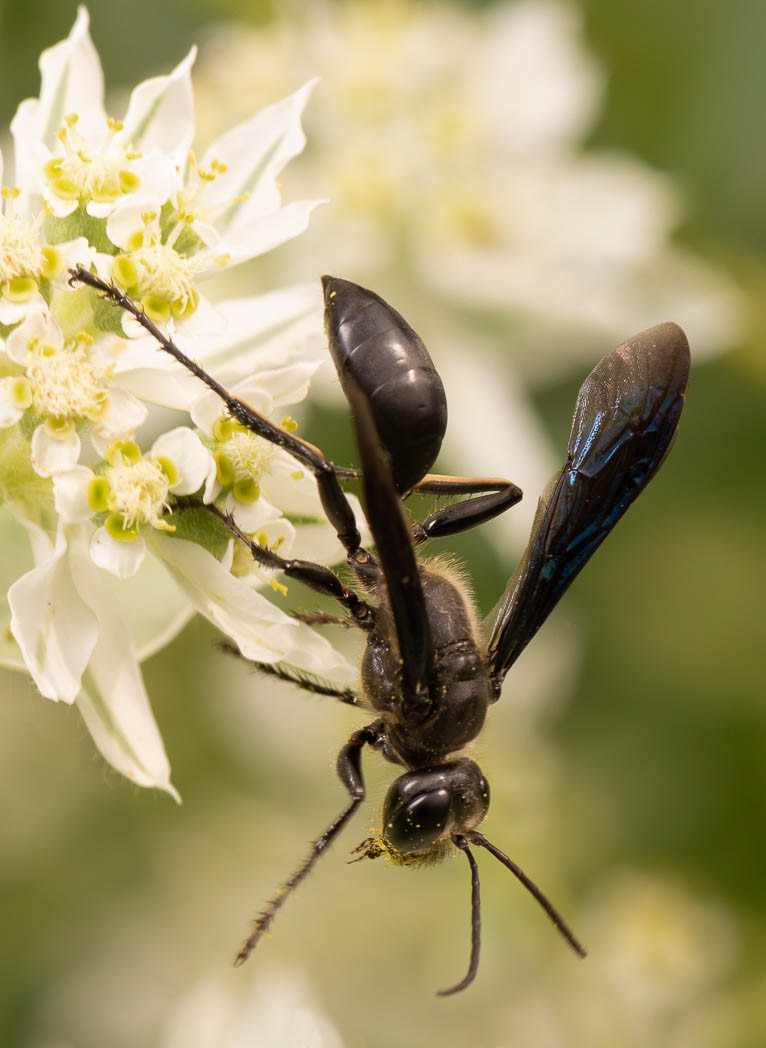

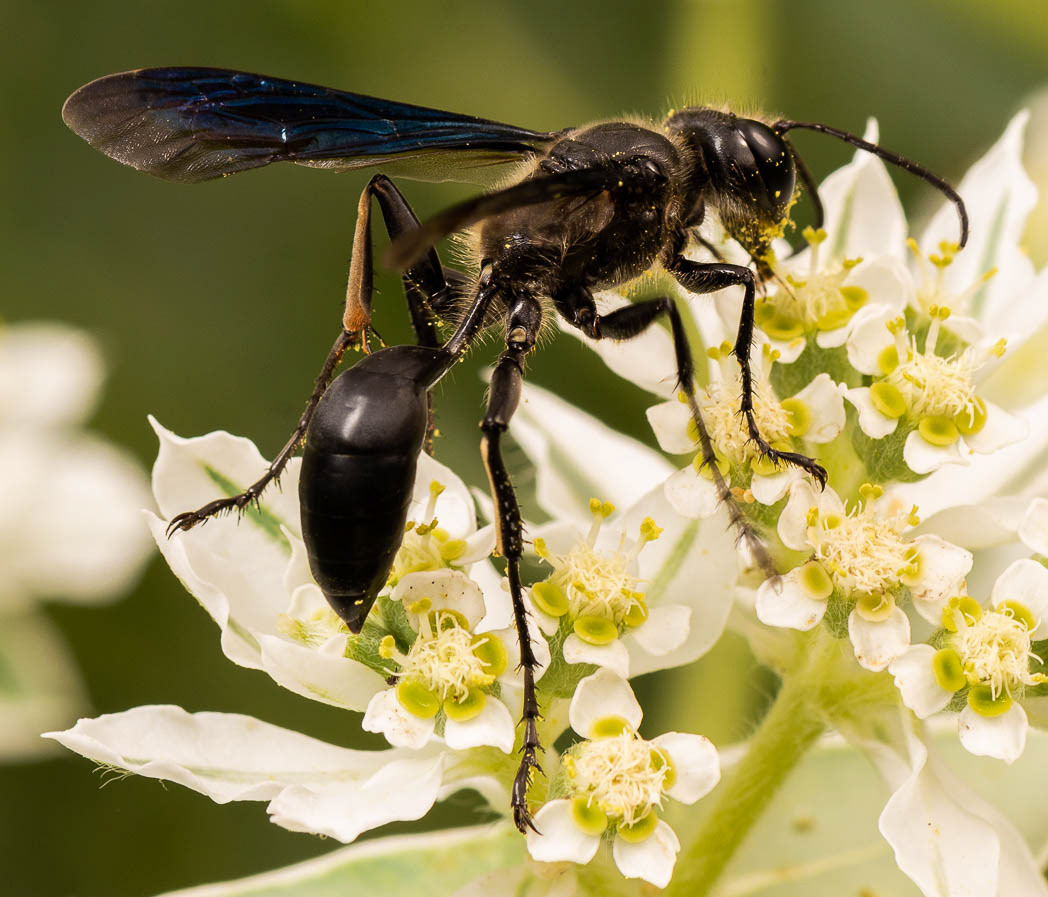
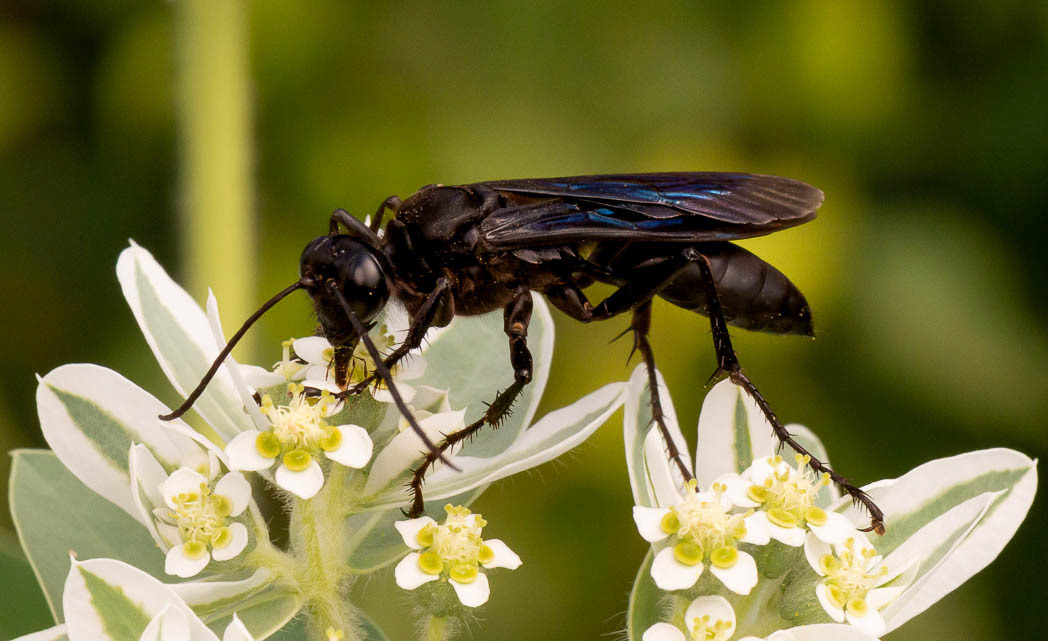
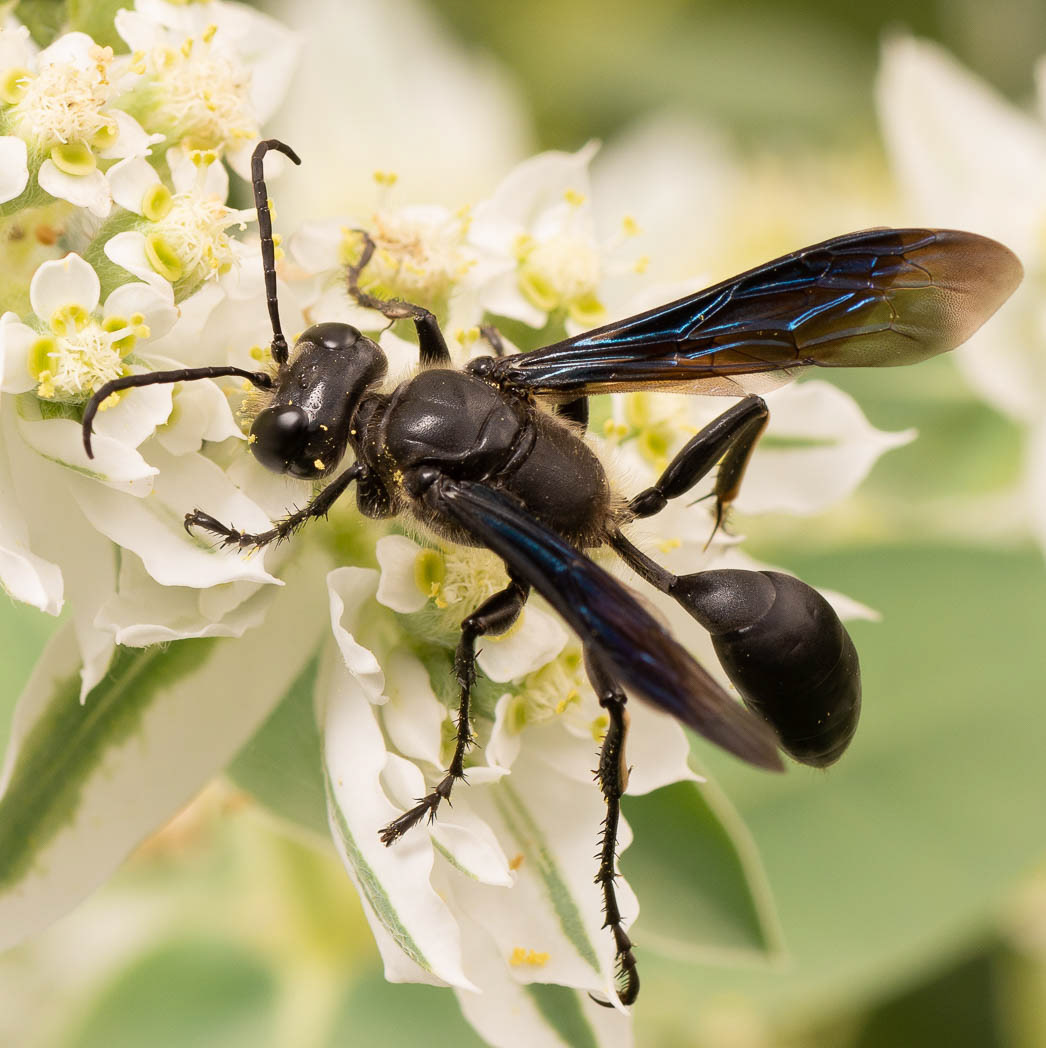
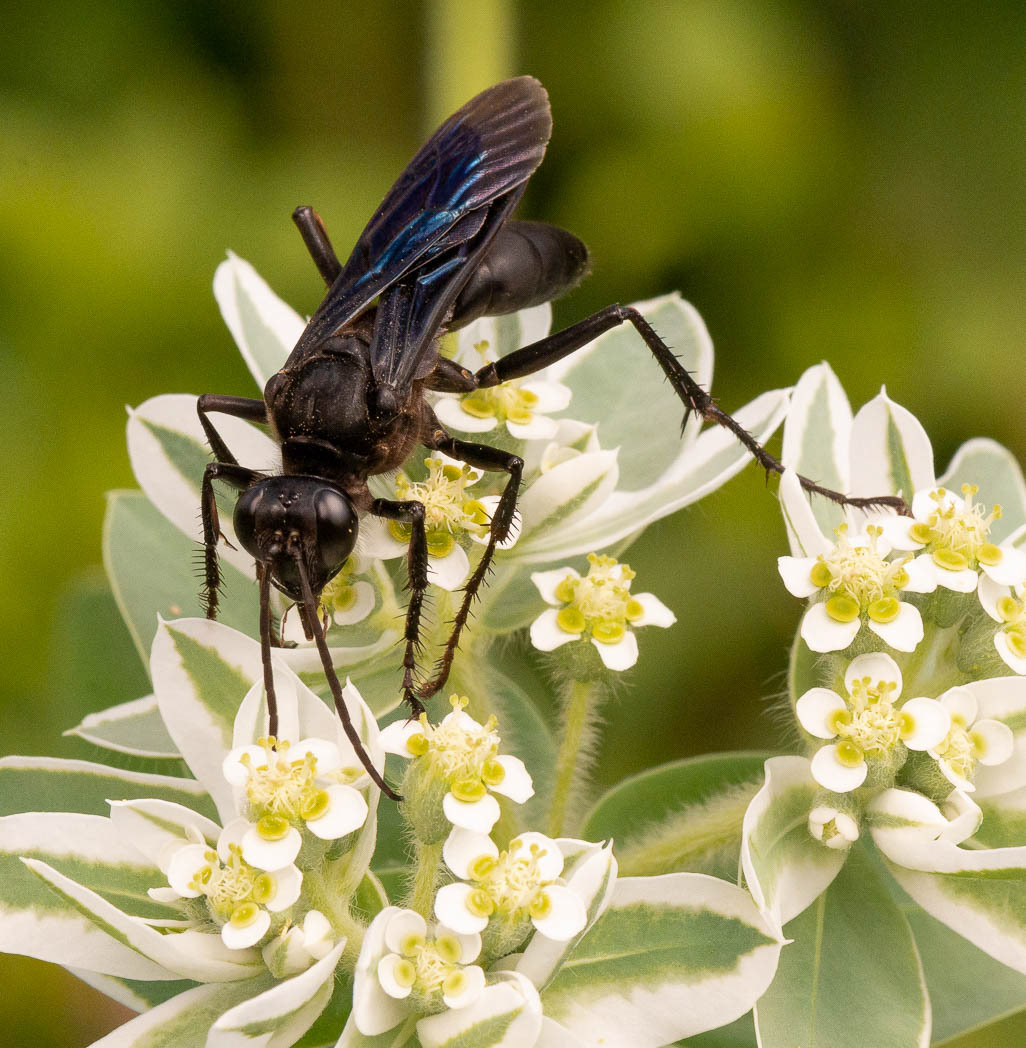
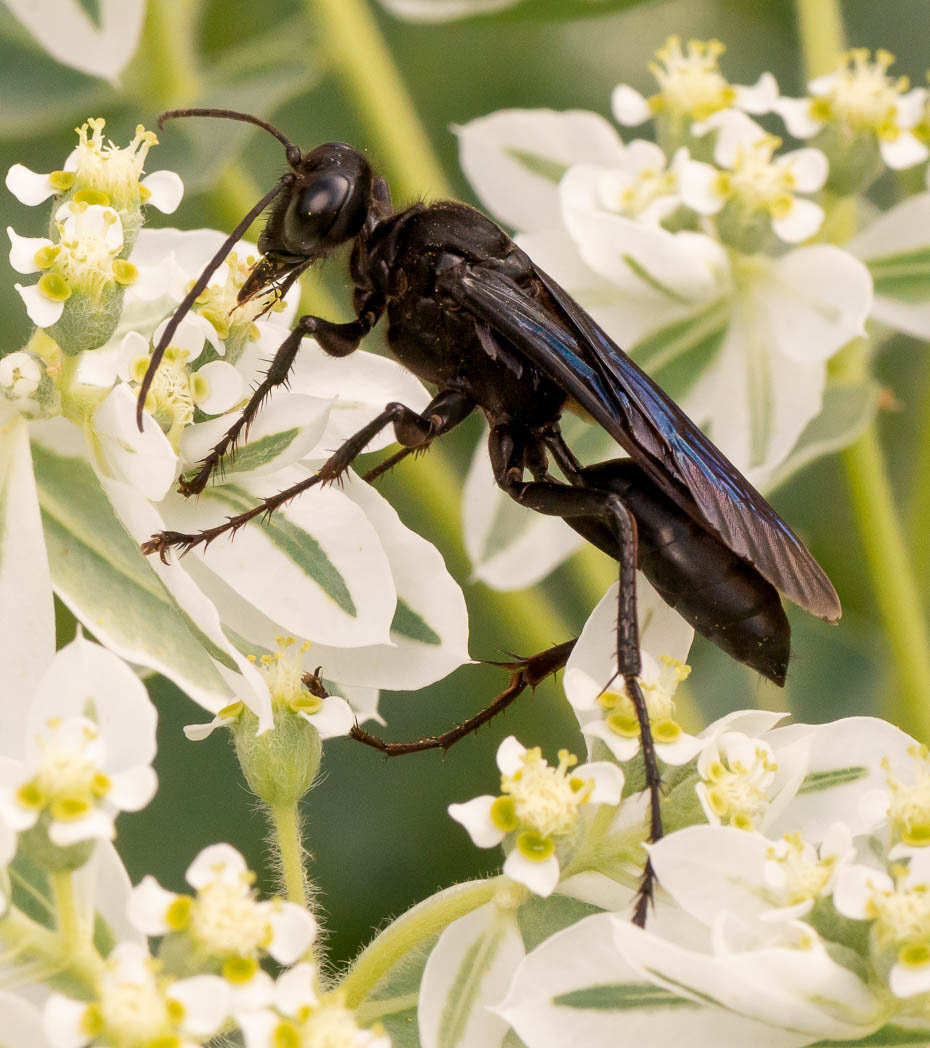
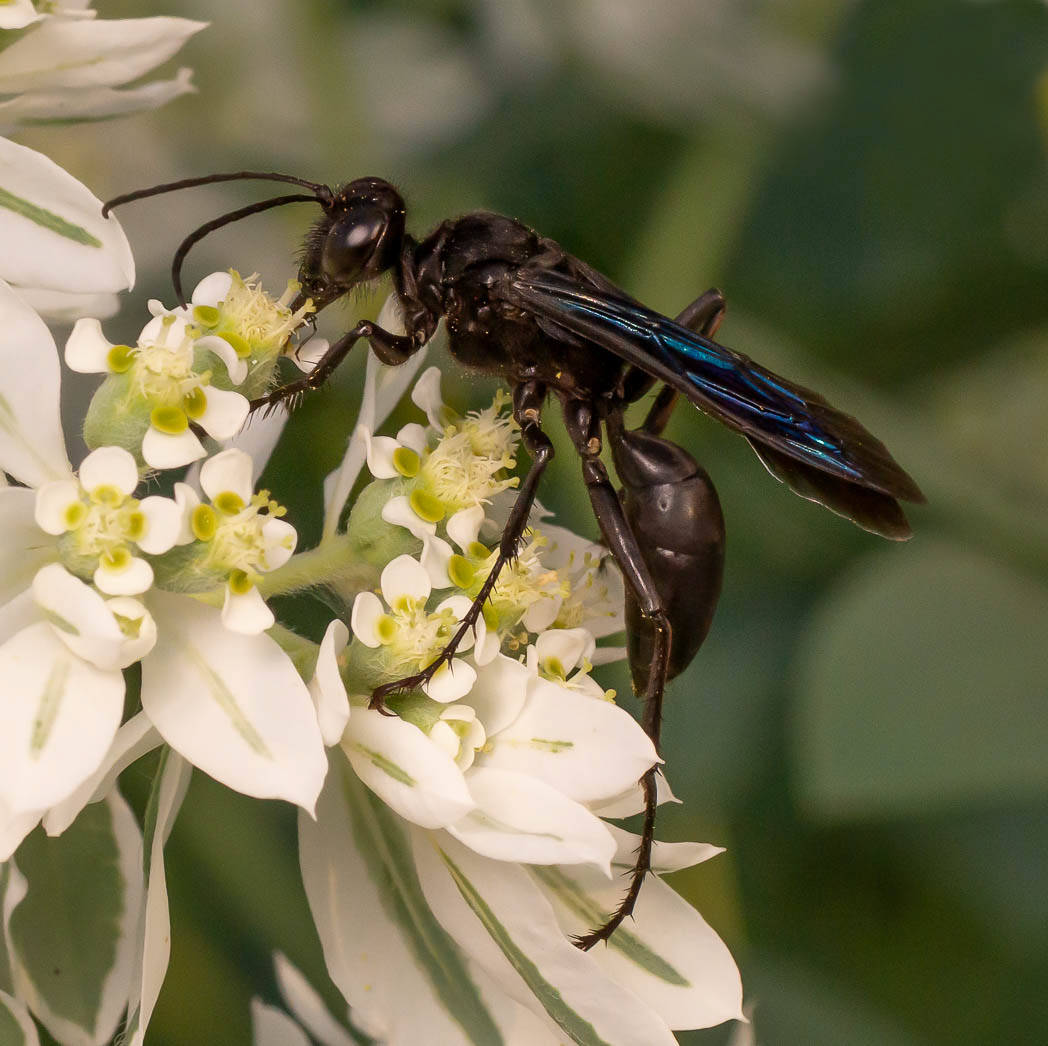
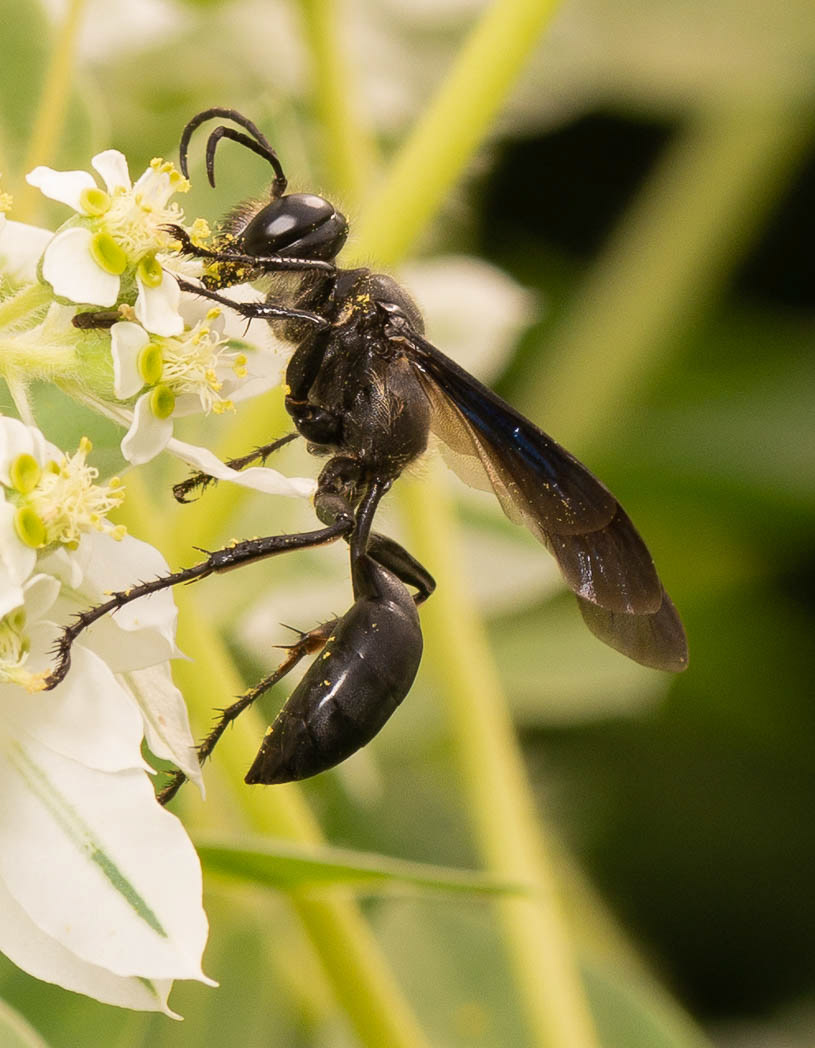
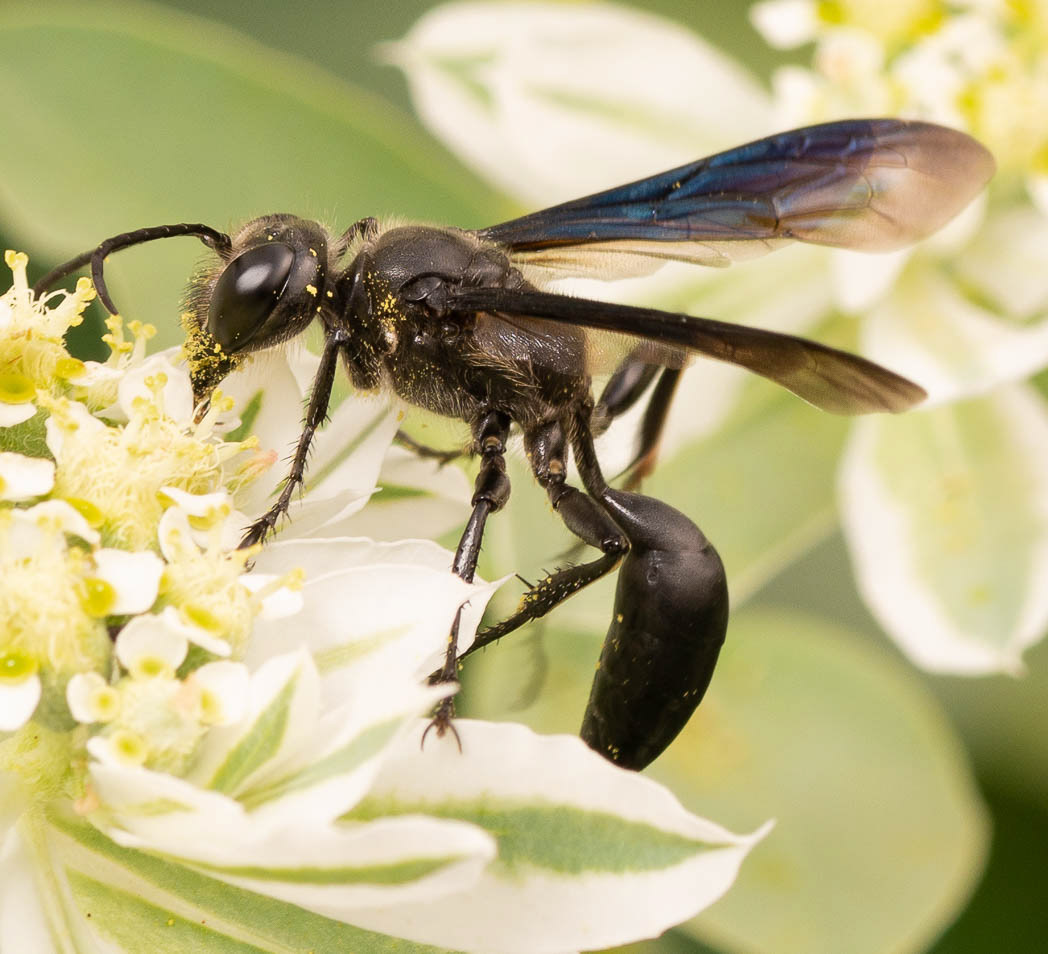
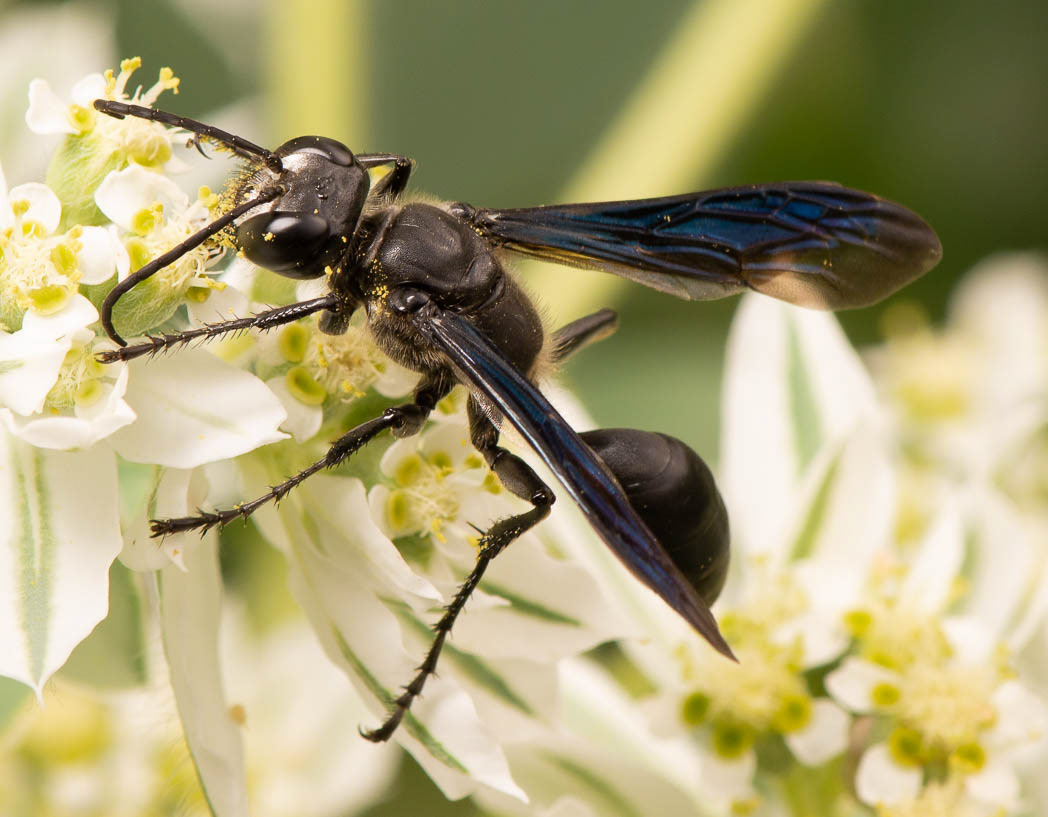
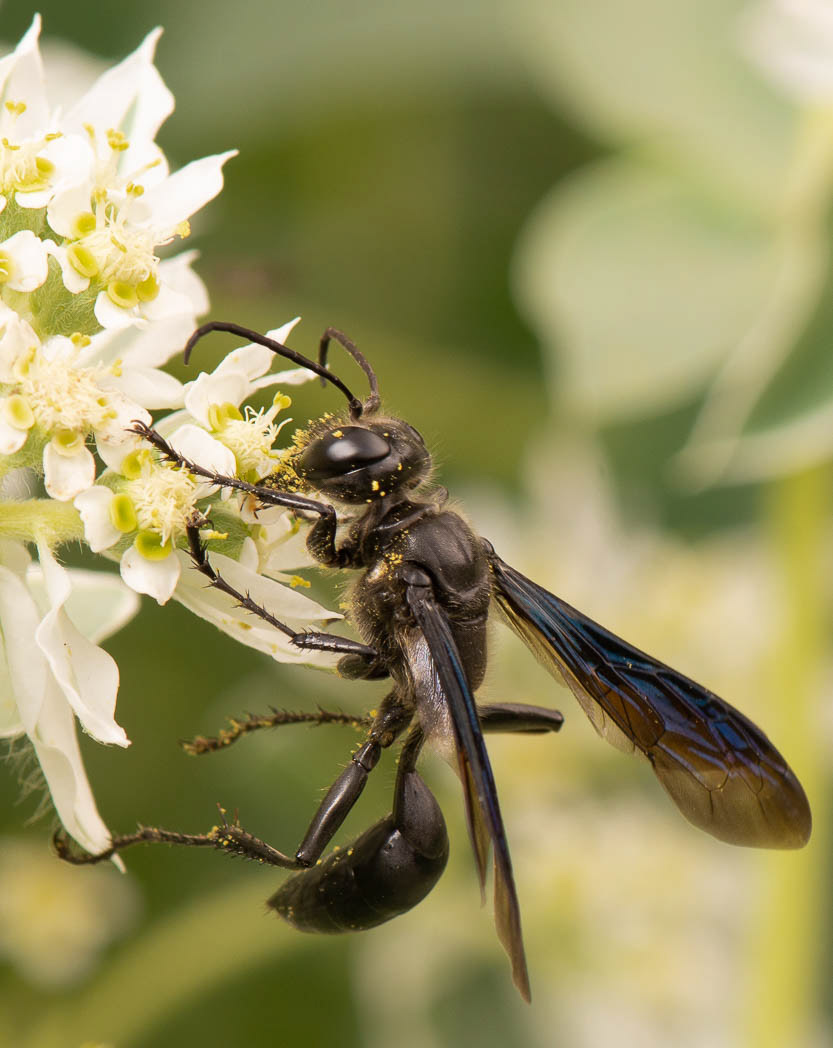
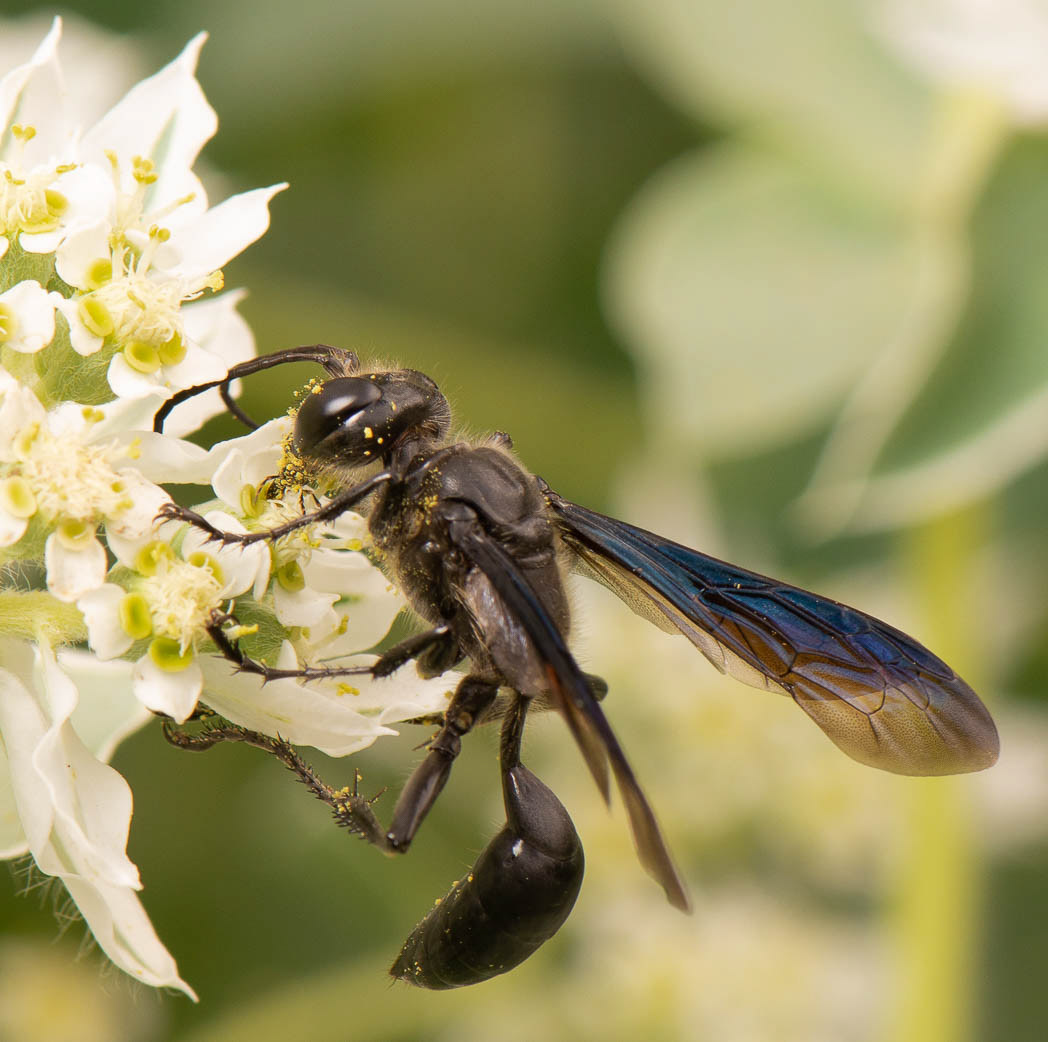
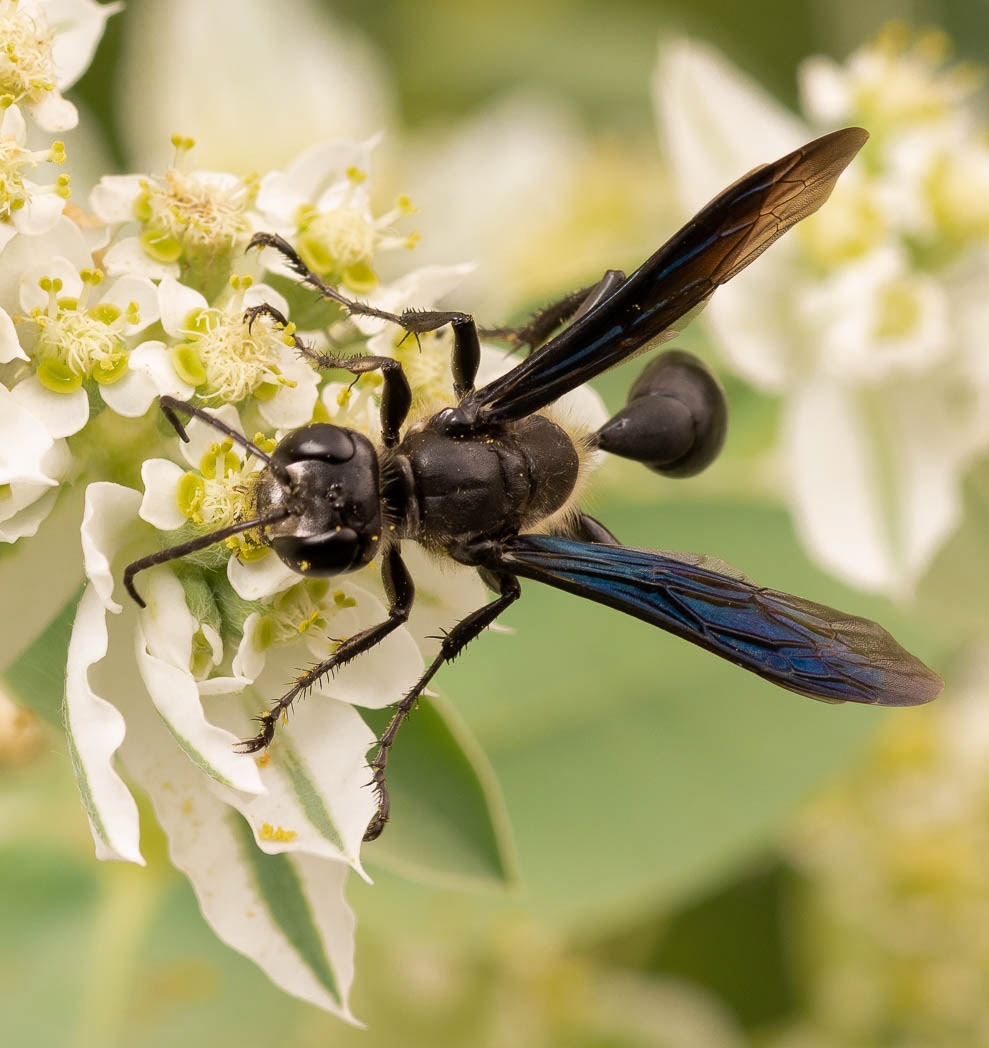
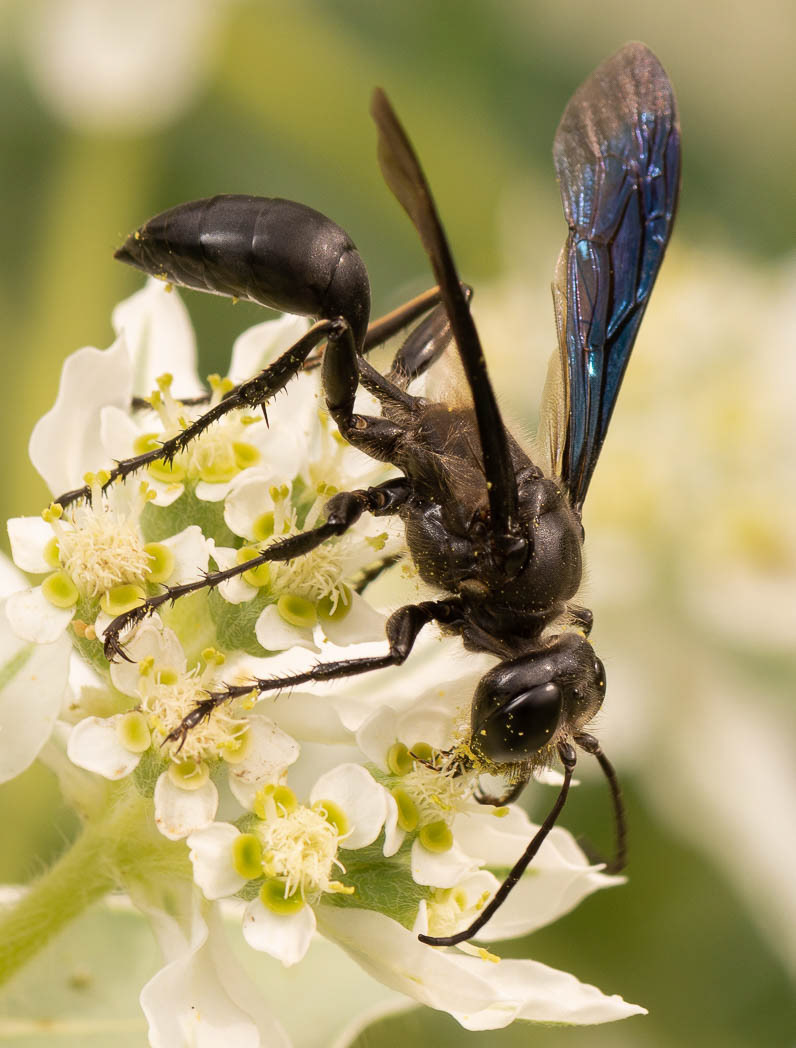

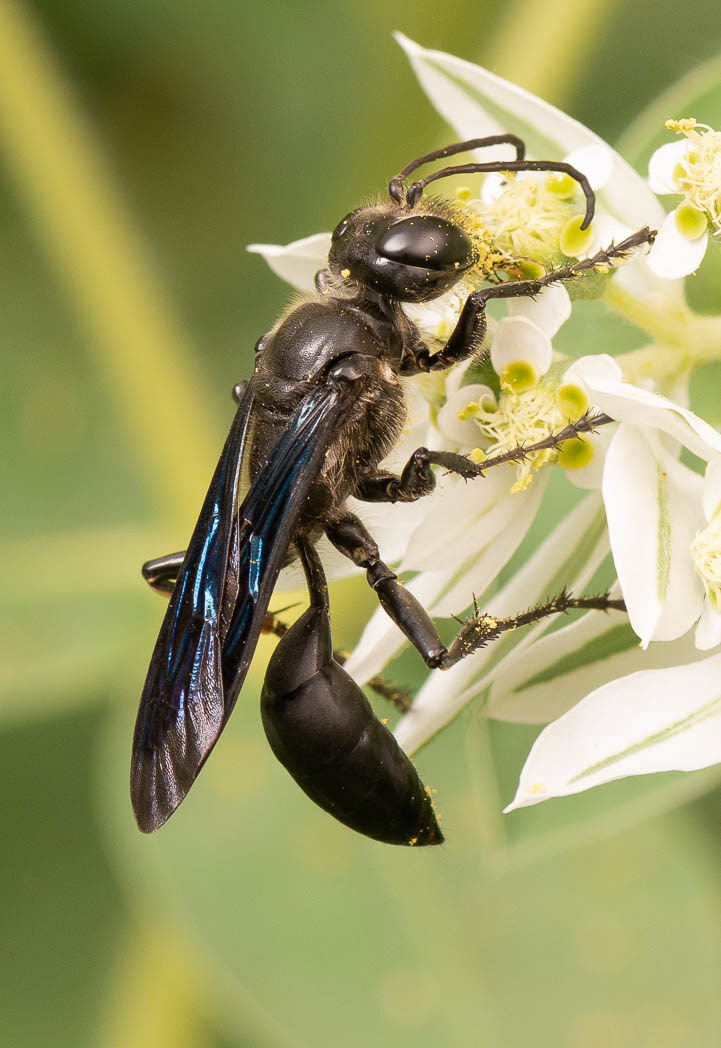
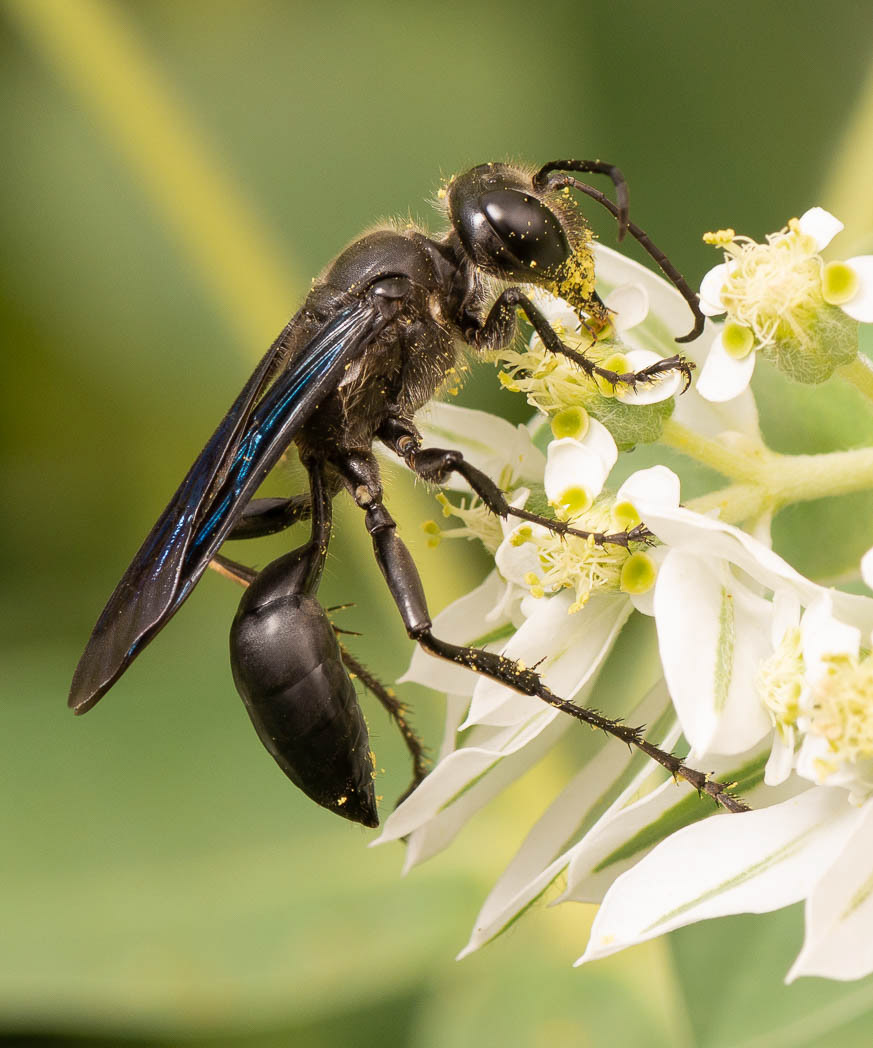
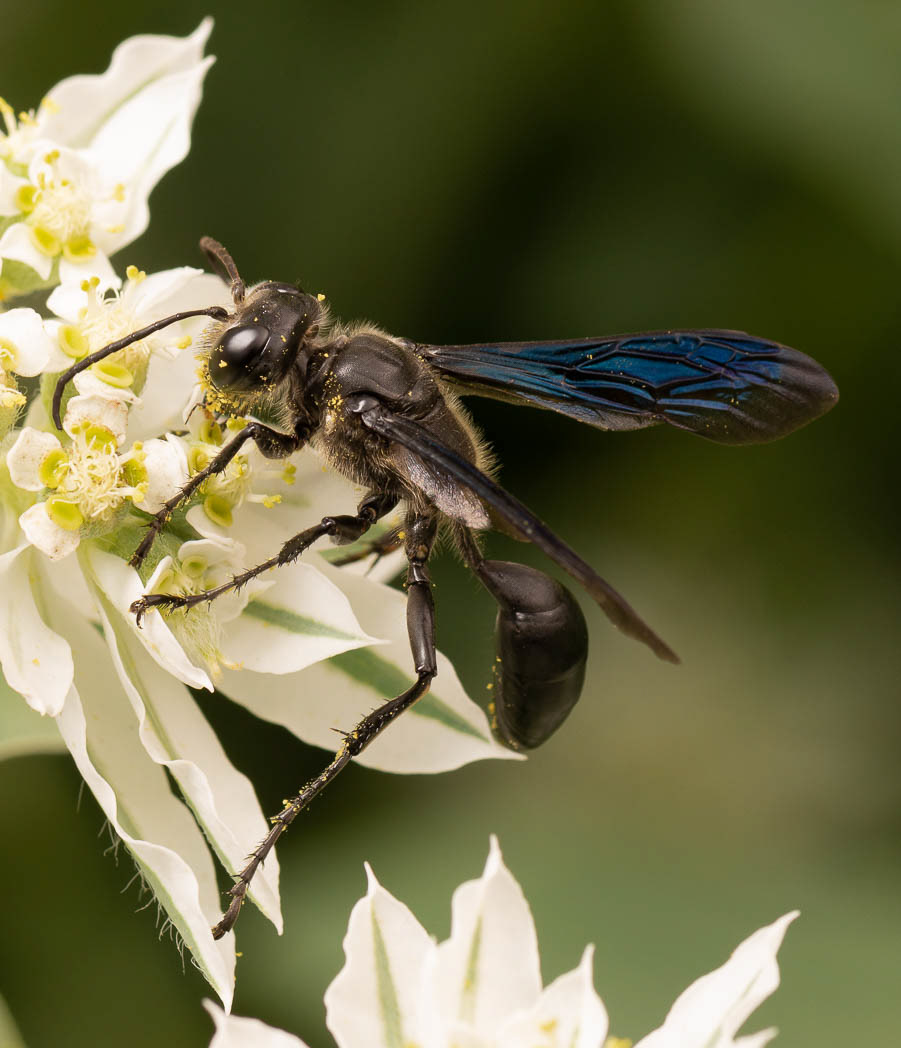
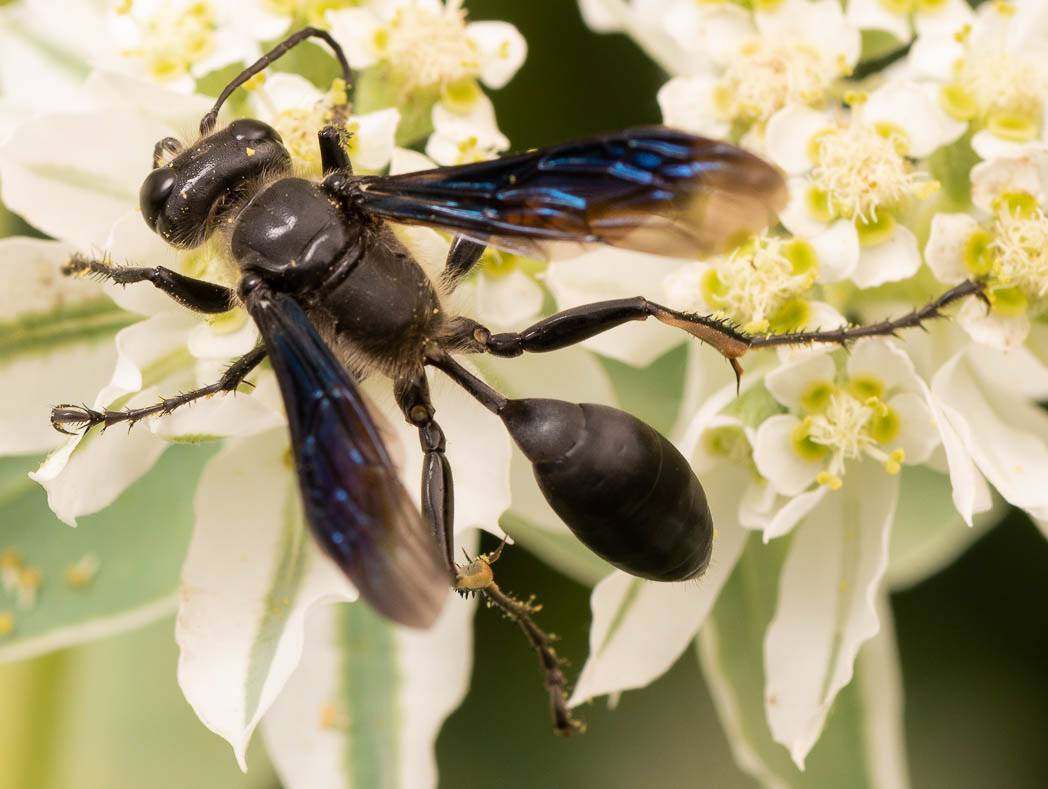

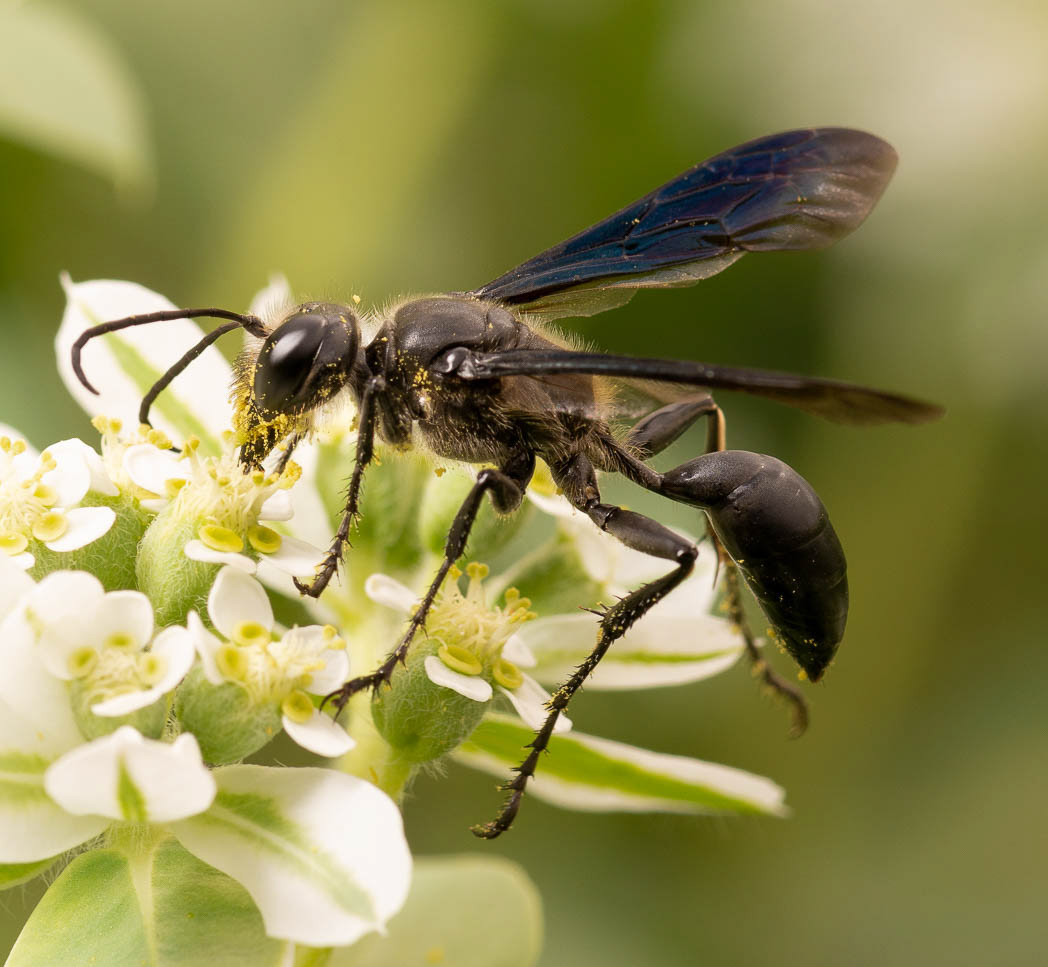
The Great Black Wasp (Sphex pensylvanicus) belongs to the species of digger wasps. It inhabits most of continental United States and parts of Canada and northern Mexico. The female digs a tunnel off of which she carves chambers to lay one egg each and place several Katydids, Crickets, or Grasshoppers. Her sting is reportedly painful to humans but does not cause swelling. The sting is for paralyzing her prey with three stings. She then flies with it to her tunnel if she is not robbed on the way by a bird. When the eggs hatch, the larvae eat the prey she has provided for about ten days before emerging as adults. Humans tend to be intimidated by the adults, but they are not interested in humans. They are not aggressive toward humans unless threatened or mistreated. When not mating or digging and provisioning tunnels, they are focused on the nectar and pollen that is their diet. They are beneficial to humans as pollinators and for the prey they help keep under control.





















